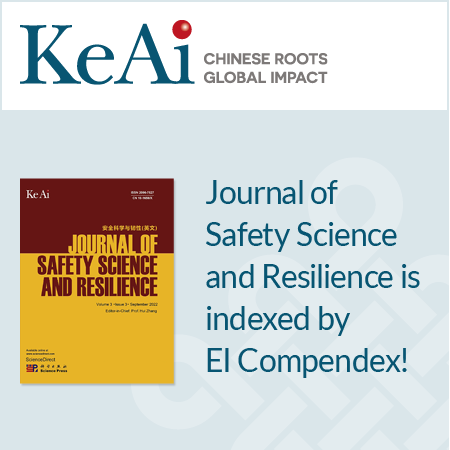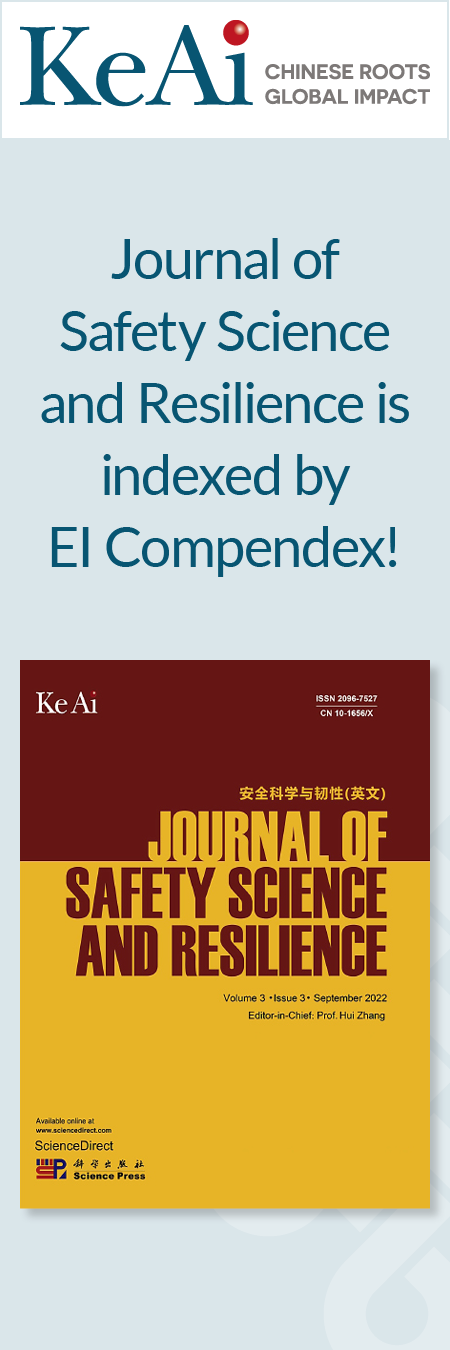Virtual and augmented reality technologies for emergency management in the built environments: A state-of-the-art review
Volume 2, Issue 1, March 2021, Pages 1-10
AI for science: Predicting infectious diseases
Volume 5, Issue 2, June 2024, Pages 130-146
Understanding future changes to fires in southern Europe and their impacts on the wildland-urban interface
Volume 2, Issue 1, March 2021, Pages 20-29
AIGC challenges and opportunities related to public safety: A case study of ChatGPT
Volume 4, Issue 4, December 2023, Pages 329-339
Improving sentiment analysis accuracy with emoji embedding
Volume 2, Issue 4, December 2021, Pages 246-252
Exploring the risks of automation bias in healthcare artificial intelligence applications: A Bowtie analysis
Volume 5, Issue 4, December 2024, Pages 460-469
Multi-hazard disaster scenario method and emergency management for urban resilience by integrating experiment–simulation–field data
Volume 2, Issue 2, June 2021, Pages 77-89
Lessons on mobile apps for COVID-19 from China
Volume 2, Issue 2, June 2021, Pages 40-49
Pandemic prevention and personality psychology: Gender differences in preventive health behaviors during COVID-19 and the roles of agreeableness and conscientiousness
Volume 3, Issue 1, March 2022, Pages 87-91
Review of analyses on crowd-gathering risk and its evaluation methods
Volume 4, Issue 1, March 2023, Pages 93-107
Similarity-based emergency event detection in social media
Volume 2, Issue 1, March 2021, Pages 11-19
Early smoke and flame detection based on transformer
Volume 4, Issue 3, September 2023, Pages 294-304
Offshore system safety and operational challenges in harsh Arctic operations
Volume 3, Issue 2, June 2022, Pages 153-168
Effect of economic policies on the stock and bond market under the impact of COVID-19
Volume 3, Issue 1, March 2022, Pages 24-38
A multi-scale agent-based model of infectious disease transmission to assess the impact of vaccination and non-pharmaceutical interventions: The COVID-19 case
Volume 2, Issue 4, December 2021, Pages 199-207
Recent advances in constructing new type of epoxy resin flame retardant system using ammonium polyphosphate
Volume 5, Issue 2, June 2024, Pages 179-193
An Internet of Things based scalable framework for disaster data management
Volume 3, Issue 2, June 2022, Pages 136-152
Multi-sensing paradigm based urban air quality monitoring and hazardous gas source analyzing: a review
Volume 2, Issue 3, September 2021, Pages 131-145
Assessing urban resilience to public health disaster using the rough analytic hierarchy process method: A regional study in China
Volume 3, Issue 2, June 2022, Pages 93-104
Atmospheric dispersion of chemical, biological, and radiological hazardous pollutants: Informing risk assessment for public safety
Volume 3, Issue 4, December 2022, Pages 372-397
Investigating the impact of the COVID-19 pandemic on crime incidents number in different cities
Volume 3, Issue 4, December 2022, Pages 340-352
Federated transfer learning for disaster classification in social computing networks
Volume 3, Issue 1, March 2022, Pages 15-23
Concepts, models, and indicator systems for urban safety resilience: A literature review and an exploration in China
Volume 4, Issue 1, March 2023, Pages 30-42
A social computing method for energy safety
Volume 5, Issue 1, March 2024, Pages 64-82
Emergency logistics scheduling with multiple supply-demand points based on grey interval
Volume 3, Issue 2, June 2022, Pages 179-188


